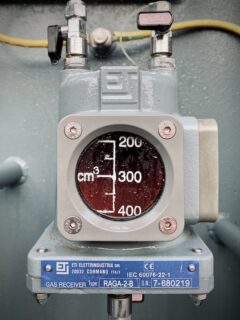Equipment ID tags, also known as asset tags, are labels attached to physical equipment used to track and identify the particular item. These tags are typically made of durable materials, such as metal, plastic, and the like, to withstand wear and tear from regular use.
They can include specific information about the asset, such as the equipment’s model number, serial number, purchase date, or any other relevant details that the user decides to include. The primary goal of equipment ID tags is to facilitate inventory management and maintenance tracking, allowing businesses to readily identify and monitor different assets.
Equipment ID Tags Product Features
- Durable materials: They are made of sturdy materials such as metal, plastic, or polyester to withstand wear and tear.
- Tracking and identification: The tags help track and identify the equipment by providing specific information, such as model number, serial number, and purchase date.
- Inventory management: They facilitate efficient inventory management by making it easy to locate and account for different assets.
- Maintenance tracking: These tags enable businesses to keep track of equipment maintenance schedules, ensuring timely inspections and repairs.
- Easy attachment: Equipment ID tags are designed to be easily attached to various types of equipment, offering convenience and flexibility.
- Customizable information: Users can choose to include specific details on the tags based on their requirements, such as asset ownership, location, or maintenance history.
- Barcode or QR code compatibility: Some equipment ID tags can be integrated with barcodes or QR codes, allowing for quick and accurate scanning and data retrieval.
- Tamper-resistant features: Certain ID tags come with tamper-resistant features, such as seals or holographic elements, to prevent unauthorized removal or alteration of the tag.
- Enhanced security: Equipment ID tags can help deter theft and improve security measures by clearly marking and identifying assets.
How Important is Equipment ID Tagging?
 It is crucial for businesses and organizations that rely heavily on physical assets, such as machinery, tools, or computers. It helps ensure efficient inventory management and maintenance tracking, which ultimately translates to cost savings and increased productivity. By providing specific information about the equipment, such as model number, serial number, or purchase date, equipment ID tags make it easier to accurately locate, identify, and keep track of different assets.
It is crucial for businesses and organizations that rely heavily on physical assets, such as machinery, tools, or computers. It helps ensure efficient inventory management and maintenance tracking, which ultimately translates to cost savings and increased productivity. By providing specific information about the equipment, such as model number, serial number, or purchase date, equipment ID tags make it easier to accurately locate, identify, and keep track of different assets.
Furthermore, certain ID tags can be integrated with barcodes or QR codes for quick and accurate data retrieval, minimizing errors and improving data management. Equipment ID tagging also improves security measures by clearly marking and identifying assets, helping deter theft and promote accountability. It is an essential component of effective asset management and maintenance tracking, providing numerous benefits that contribute to the success of a business or organization.
What Materials are Used for Equipment ID Tagging?
- Metal: They are commonly made of metals such as aluminum or stainless steel, known for their durability and resistance to corrosion.
- Plastic: Some are made of plastic materials like polycarbonate or polyester, which are lightweight yet durable.
- Polyester: Polyester tags are popular due to their resistance to harsh environmental conditions, including moisture, UV rays, and extreme temperatures.
- Vinyl: Vinyl tags are commonly used for temporary or short-term equipment labeling, as they offer good durability and flexibility.
- Polypropylene: Polypropylene tags are resistant to chemicals and have excellent tear strength, making them suitable for demanding industrial environments.
- Anodized aluminum: Anodized aluminum tags are known for their corrosion resistance and are commonly used in outdoor or harsh environments.
- Synthetic materials: Certain equipment ID tags are made from synthetic materials like plastic composites, which offer enhanced durability and longevity.
Which Material Should You Use?
 The choice of material for equipment ID tagging depends on various factors, including the specific requirements of your organization and the environment in which the equipment will be used. Metal tags, such as aluminum or stainless steel, are often preferred for their durability and resistance to corrosion, making them suitable for harsh outdoor or industrial environments.
The choice of material for equipment ID tagging depends on various factors, including the specific requirements of your organization and the environment in which the equipment will be used. Metal tags, such as aluminum or stainless steel, are often preferred for their durability and resistance to corrosion, making them suitable for harsh outdoor or industrial environments.
Plastic tags, like polycarbonate or polyester, can offer a lighter and more cost-effective option, while still providing sufficient durability. Laminated paper tags are commonly used for temporary or short-term labeling needs. Polyester tags are a good choice when equipment may be exposed to moisture, UV rays, or extreme temperatures. The material you choose should balance factors such as durability, visibility, and cost, based on the specific needs and conditions of your equipment and organization.
Equipment ID Tags for Interior and External Use
Equipment ID tags are used for both interior and external applications, and the choice of tags may vary depending on the environment they will be exposed to. For interior use, equipment ID tags can be made of materials like plastic or laminated paper, as they are lightweight and cost-effective. These tags are suitable for identifying and tracking assets within the controlled environment of a facility or office.
On the other hand, for external use, equipment ID tags need to withstand harsher conditions such as weather extremes, UV exposure, and potential physical impact. In this case, tags made of metal, such as aluminum or stainless steel, or synthetic materials like synthetic paper or plastic composites, offer greater durability and resistance. These materials can protect the tags from rust, corrosion, fading or deteriorating under environmental stressors, making them ideal for outdoor or rugged environments. Proper selection of equipment ID tags ensures their longevity, visibility, and effectiveness in both interior and external applications.
Common Applications of Equipment ID Tags

- Asset tracking: They are commonly used to track and manage assets, allowing for efficient inventory management and reducing the risk of loss or theft.
- Maintenance and servicing: They are used to track equipment maintenance schedules, ensuring regular upkeep and preventing any potential breakdowns or safety hazards.
- Safety and compliance: They can display important safety information, such as electrical or chemical hazards, providing crucial information to employees and ensuring compliance with safety regulations.
- Equipment identification: Tags help to identify equipment quickly and accurately, ensuring that the right tool or machine is used for a specific task, reducing errors and improving efficiency.
- Warranty and repair tracking: They can include information about warranties or repair history, allowing for easy tracking of maintenance records and facilitating warranty claims or repairs.
- Equipment rental: They are often used in equipment rental companies to track rented items and ensure proper returns, helping to prevent loss and maintain accurate inventory records.
- Calibration and testing: They can indicate the last calibration or testing date of equipment, ensuring compliance with quality standards and industry regulations.
- Emergency response: In emergency situations, equipment ID tags can provide vital information about the type, location, or usage of the equipment, aiding in a quick and efficient response.
When Should an ID Tag be Placed on Equipment?
ID tags should be placed on equipment as soon as it is acquired or put into service. It is important to tag equipment promptly to ensure proper identification, tracking, and management from the very beginning. By tagging equipment early on, organizations can establish a clear record of ownership, maintenance history, and other relevant information.
Tagging equipment right away helps prevent confusion, misplacement, or accidental use of similar items. It also allows for immediate implementation of asset tracking systems or software, enabling efficient inventory management and reducing the risk of loss or theft. By placing ID tags on equipment at the earliest opportunity, organizations can ensure effective equipment management and optimize their operations in terms of safety, compliance, maintenance, and overall efficiency.
What is the Best Way to Label Equipment Tags?
 The best way to label equipment tags depends on the specific needs and conditions of the equipment and the organization’s standards and protocols. However, some general guidelines can ensure effective labeling. First, the label should be legible, visible, and durable, able to resist wear, tear, and exposure to environmental factors. Secondly, labels should include relevant information, such as equipment name or number, manufacturer, model, serial number, purchase date, and maintenance history.
The best way to label equipment tags depends on the specific needs and conditions of the equipment and the organization’s standards and protocols. However, some general guidelines can ensure effective labeling. First, the label should be legible, visible, and durable, able to resist wear, tear, and exposure to environmental factors. Secondly, labels should include relevant information, such as equipment name or number, manufacturer, model, serial number, purchase date, and maintenance history.
Thirdly, labels should comply with any safety or regulatory requirements, such as displaying hazard warnings or specifications. Finally, organizations can enhance their equipment management by using barcodes, QR codes or RFID tags on the labels, enabling automated tracking and facilitating inventory management. Effective labeling of equipment tags ensures efficient asset tracking and management, enhances safety and regulatory compliance, and streamlines maintenance and servicing activities.
How Often Do Tools Need to be Tagged?
The frequency of tagging tools depends on several factors, including the type of tool, the frequency of use, the environment in which they are used, and the organization’s policies and requirements. Generally, tools should be tagged at least once a year or more often if they are frequently used, abused, or moved between locations frequently. Some organizations tag tools before or after each use, while others tag them after each inspection, maintenance, or repair. In environments where tools are exposed to harsh conditions or harsh handling, such as construction sites or manufacturing plants, a more frequent tagging schedule may be necessary.
Ultimately, tagging should be conducted based on careful consideration of the tool usage, risk assessment, and quality management principles. By maintaining a regular and systematic tagging schedule, organizations can ensure proper tracking and management of their tools, enhance safety, and maximize tool lifespan.
Conclusion
Equipment ID tags serve as indispensable tools for effective asset tracking, management, and safety. They provide a simple yet powerful solution for organizations to keep track of their equipment, ensuring accurate inventory records, streamlined maintenance, and efficient operations. These tags are essential for any organization seeking to optimize their equipment management and enhance safety and compliance measures.
Popular Posts:




